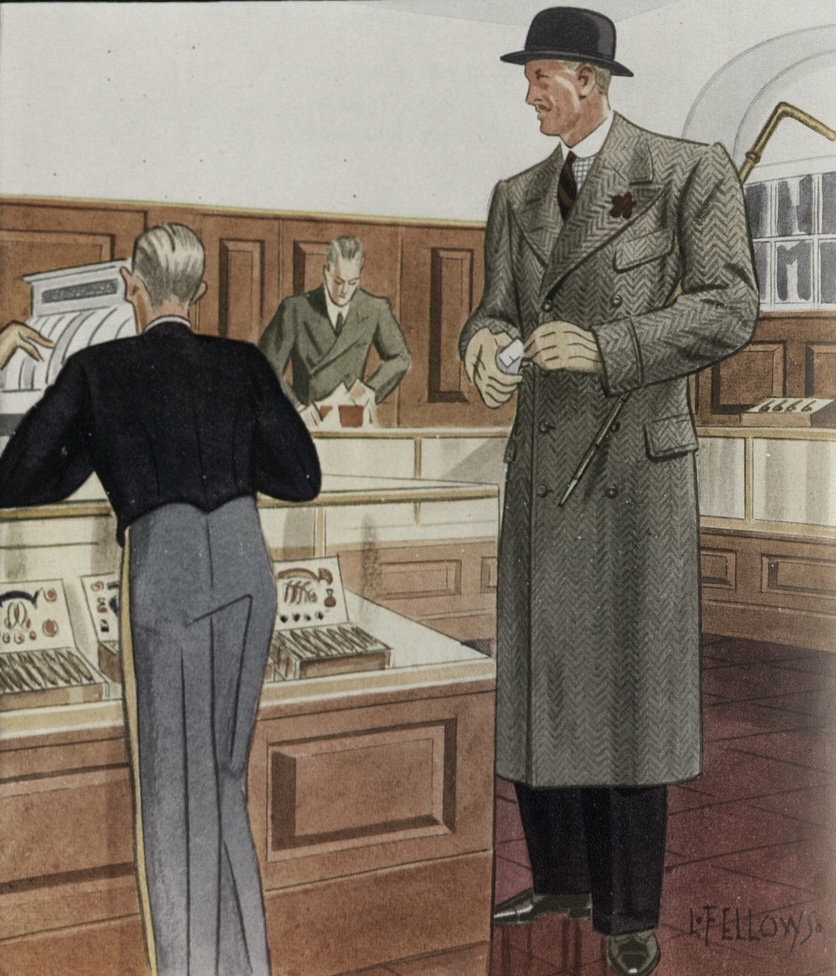Fashion illustrations from the early to mid-20th century, particularly those gracing magazines like Apparel Arts between the 1920s and 1960s, offer a captivating glimpse into the era’s sartorial elegance. Among the distinguished illustrators of this period—such as J.C. Leyendecker, Robert Goodman, Lester Rubin, and Leslie Saalburg – Laurence Fellows stands out for his significant contributions to men’s fashion illustration.
Early Life and Education
Born in 1885 in Ardmore, Pennsylvania, Laurence Fellows pursued formal art training at the Pennsylvania Academy of the Fine Arts. To further refine his skills, he studied under J.P. Laurens at the Académie Julian in Paris, France.
This European education profoundly influenced his artistic style, blending American sensibilities with European techniques.


Career Beginnings
Returning to the United States in the 1910s, Fellows initially made his mark with illustrations for various companies. His early work, characterized by a focus on overall shapes rather than intricate details, featured thin outlines and flat tonal qualities. This distinctive approach garnered attention, leading to commissions from satirical magazines and commercial clients like Kelly-Springfield Tires.
In these advertisements, Fellows combined sophisticated draftsmanship with humor, often employing off-balanced compositions that set his work apart.


Pioneering Men’s Fashion Illustration
The 1930s marked a pivotal shift in Fellows’ career as he transitioned to detailed fashion illustrations. His work appeared in prominent magazines such as Vanity Fair, Vogue, Cosmopolitan, and notably, Apparel Arts—a precursor to today’s GQ.
At a time when few artists specialized in men’s fashion illustration, Fellows became a regular contributor, with his work featured in nearly every issue. His illustrations captured the essence of the era’s style, portraying men as dapper, affluent, and sophisticated.


Artistic Style and Influence
Fellows’ illustrations are renowned for their stylized yet detailed portrayal of men’s attire. He adeptly depicted various fabrics—flannels, worsteds, tweeds, and linens—conveying their weight, texture, and drape. His characters exuded elegance and nonchalance, often depicted in settings that highlighted their affluence and taste.
Unlike contemporary fashion imagery that frequently emphasizes youthful models, Fellows’ subjects were mature men, reflecting a period when sophistication was paramount in menswear advertising.
Legacy and Recognition
Laurence Fellows passed away in 1964, but his influence endures among enthusiasts of classic men’s fashion. His illustrations continue to inspire those who appreciate the timeless elegance of early 20th-century style. In recognition of his contributions to the field of illustration, Fellows was posthumously inducted into the Society of Illustrators Hall of Fame in 2009.
The artistry of Laurence Fellows serves as a testament to a time when fashion illustration was pivotal in defining and disseminating men’s style. His work remains a valuable resource for understanding the aesthetics of a bygone era and continues to inspire contemporary appreciations of classic menswear.


